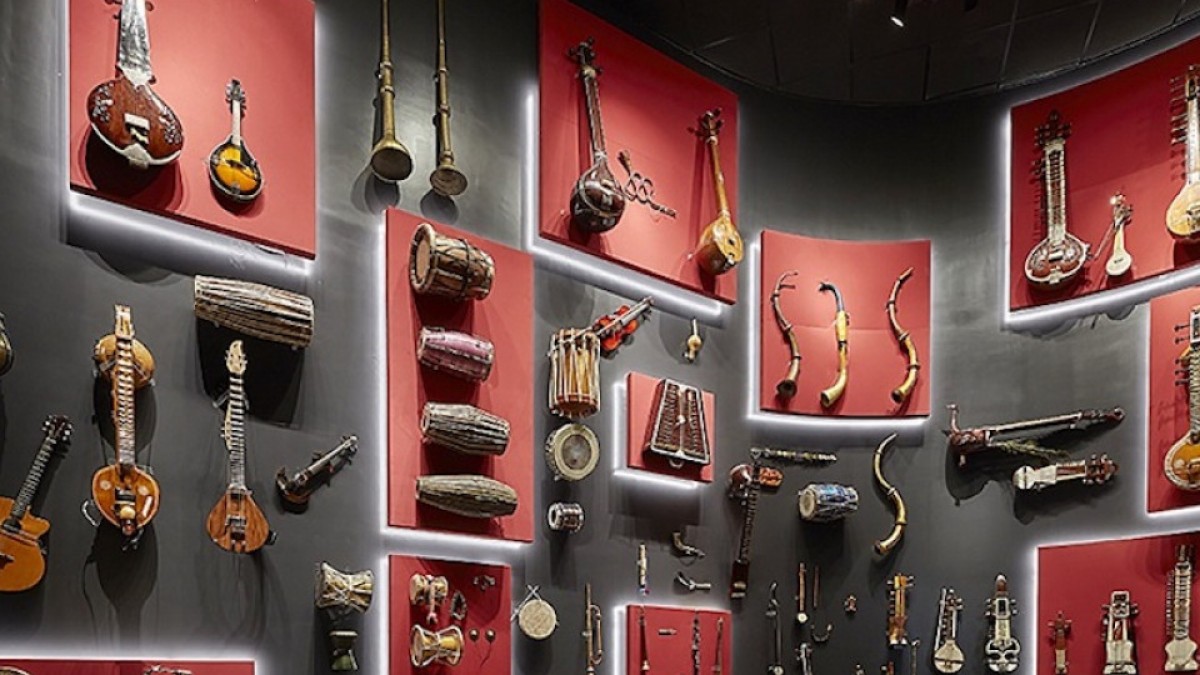As ennui arising out of Covid-induced lockdown and restricted travel settled in over the last two years, people picked new hobbies like learning music or brushed up old ones, inadvertently pushing the exports of musical instruments upwards.
Under lockdown in foreign land and yearning for home, online shopping provided the Indian diaspora with an opportunity to lay their hands on authentic instruments like the sitar, tanpura, or tabla, which was a major reason behind the uptick in sales, said exporters and musicologists.
Commerce and Industry Minister Piyush Goyal had on October 26 tweeted that the exports have risen more than 3.5 times in the first six months of the current fiscal compared to the same period in 2013.
Retweeting Goyal’s tweet the same day, Prime Minister Narendra Modi said the growth was encouraging. ”With Indian music gaining popularity worldwide, there is a great opportunity to further grow in this sector,” he tweeted.
The increase, however, has been significant starting from 2019-20, when India recorded the export of musical instruments worth Rs 195.52 crore, according to the data from the Department of Commerce. Over the next two years of pandemic, the export shot up after a slight dip in 2020-21 with the sale of instruments worth Rs 187.14 crore.
The country in 2021-22 at the peak of the COVID-19 pandemic registered a sale of Rs 287.45 crore worth of musical instruments. “There has definitely been an increase in the export of Indian classical music instruments post-pandemic. I think as people were forced to stay inside, they started picking new hobbies, or wanted to revive an old one,” Ajay Rikhiram of Delhi-based Rikhi Ram Musical Instrument Mfg Co told PTI.
He added, while import of Western instruments like a guitar too increased, more Indian instruments such as sitar, tanpura, harmonium and tabla were exported. Its usage as an accompanying instrument makes tanpura an essential element for almost all classical music renditions, Rikhiram said.
Sitar, on the other hand, remains the most sought-after instrument for its dominance in Indian classical music and popularity due to artistes such as Pandit Ravi Shankar and The Beatles’ George Harrison, he said. According to the Rikhi Ram website, a sitar can cost anywhere between Rs 75,000 and Rs 3.5 lakh. Similarly, the price of a tanpura can also vary between Rs 25,000 to Rs 1.25 lakh.
He added that the sales mostly come from the US while European countries come next. Government data shows that the US was the biggest importer of musical instruments, parts, and accessories from India in 2021-22, giving a business worth USD 7.37 million, a little over Rs 60 crore.
This year, from April to August, the US imported equipment worth USD 3.42 million (Rs 28 crore approximately) from India. Germany has remained a close second for several years now. In 2021-22, Germany imported musical instruments, parts, and accessories worth USD 6.60 million, nearly Rs 54 crore, in 2021-22, it bought Indian instruments worth USD 2.52 million, nearly Rs 20 crore, from April till August this year.
Other major importers of Indian musical instruments are China, Malaysia, Indonesia, the UAE, France, Japan, and the UK. Ashish Dewani of Mumbai-based Haribhau Vishwanath Musical Industries said there has been an almost constant uptick in the export over the last two-three years. The reason, he believes, is the travel restrictions.
“Earlier people used to buy instruments on their trips to India, but since there were restrictions for the most part of the last two years they preferred buying them online. Online music classes also helped push the sale,” Dewani said.
But what is it about Indian-made instruments that makes them unique in their quality so much that people are prepared to pay exorbitant international shipping prices? Anupam Mahajan, former Head, and Dean, the Faculty of Music and Fine Arts at Delhi University, said it is the oral tradition of this craft that is handed down to the generations that is intrinsic to India.
“Nowhere in the world will you find karigar (artisans) who can make Indian instruments. Because it is an oral tradition and passed down to sons by their fathers and so on. It is a generational knowledge,” Mahajan told PTI. She added that the genuine craftsmen who make musical instruments have been in this profession for generations and each part of an instrument is crafted by a different artisan.
“The novelty of an Indian instrument lies in the fact that the type of wood that is used, the type of polishing and other materials can only be found in India. On top of that, the measurements are so intrinsically Indian that one would be hard-pressed to find a match elsewhere,” she said. Rikhiram explained that it would be nearly impossible to make a sitar that would have the same tone and texture as one made in India.
“The top reason is the availability of five seasons in India that treats the wood for four-five years like nowhere else possible. Next, the pumpkin gourd that is used in making the veena family of instruments, including sitar, is brought in from the coastal states where it is moulded in a specific type of mud that makes it suitable for a sitar,” he said. It is the small things like these that make Indian classical music instruments unique in nature and also sought by enthusiasts the world over, he added.
(With PTI inputs)
